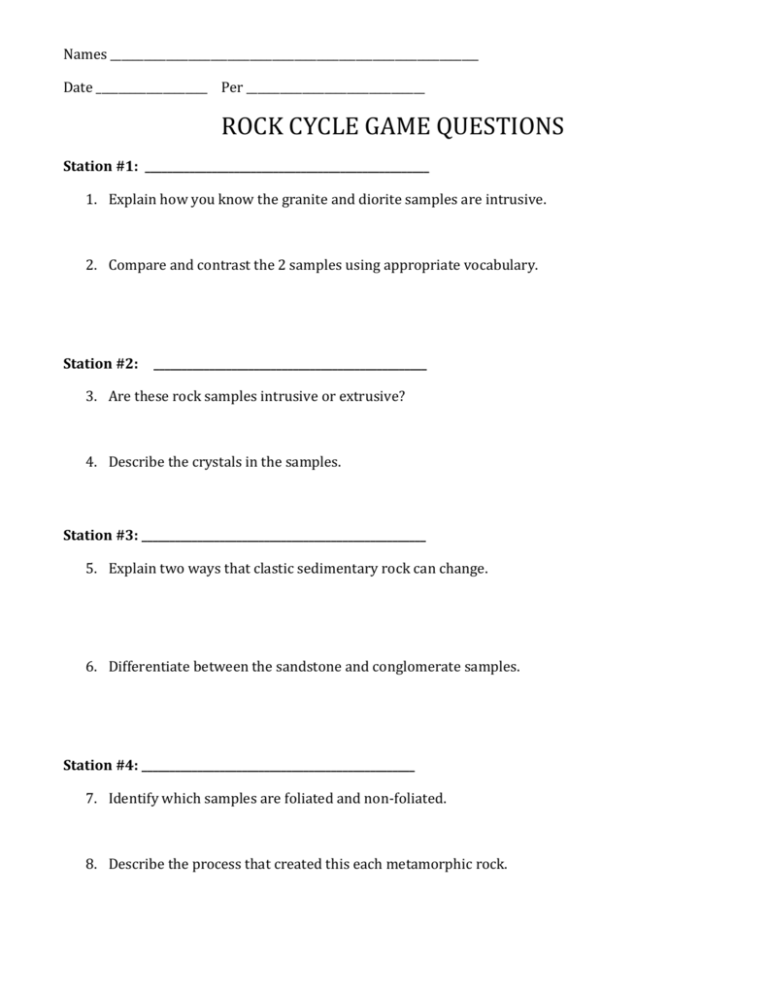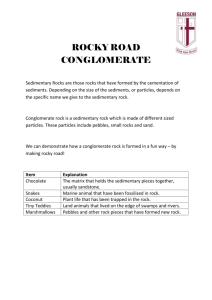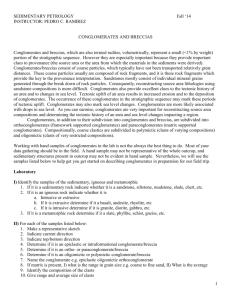Rocks- rock cycle game
advertisement

Names __________________________________________________________________ Date ____________________ Per ________________________________ ROCK CYCLE GAME QUESTIONS Station #1: ___________________________________________________ 1. Explain how you know the granite and diorite samples are intrusive. 2. Compare and contrast the 2 samples using appropriate vocabulary. Station #2: _________________________________________________ 3. Are these rock samples intrusive or extrusive? 4. Describe the crystals in the samples. Station #3: ___________________________________________________ 5. Explain two ways that clastic sedimentary rock can change. 6. Differentiate between the sandstone and conglomerate samples. Station #4: _________________________________________________ 7. Identify which samples are foliated and non-foliated. 8. Describe the process that created this each metamorphic rock. Station #5: ___________________________________________________ 9. Draw and label a flow chart to show the process by which these sediments can become rock. (You may use your notes to refresh your memory of the appropriate terminology) Station #6: _________________________________________________ 10. In your own words, describe the factors involved in the formation of magma. Use page 113 in the text book as a reference. Station #7: ________________________________________________ 11. Classify the sample of rock as being clastic or nonclastic sedimentary rock. 12. Predict why particles in the breccias sample are angular while the particles in the conglomerate are rounded. Station #8: _____________________________________________ 13. Formulate a statement describing where and how peridotite is formed. Use page 123 in your textbook as a resource. Station #9: ______________________________________________ 14. Using the graphic organizer of your choice, compare and contrast basalt and gabbro. Station #10: ______________________________________________ 15. Think about the “acid rain” activity where you modeled chemical weathering. In nature, the resulting dissolved particles might run off into bodies of water. Use the index card for 2 examples of how those particulates (molecules/ions) are reused. Analysis 16. What stations did you notice had the largest number of people? Since all stations started out with basically the same number of students, what does this say about the rock cycle and its different stages? 17. Did all groups of students follow the same path? Explain why or why not. 18. Are the lifecycles of rocks predictable? Justify your answer. Conclusion 19. and 20. Draw the Rock Cycle using arrows to show all possible changes. Label each arrow with the process that creates the type of rock: IGNEOUS SEDIMENTARY METAMORPHIC








